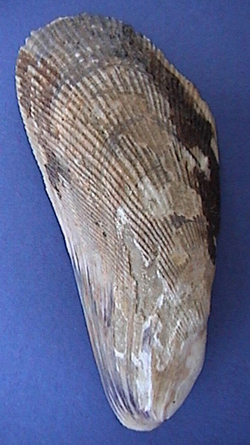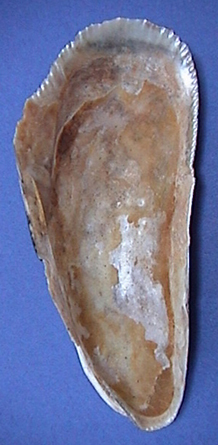|
Ribbed Mussel (Geukensia demissa)
|
|
This bivalve is also an equivalve that grows up to five inches in length. Each shell is wide and rounded on one end and narrow and pointed at the other end where the hinge is located. The name of this mollusk comes from the radial ribs on the outside, which is usually covered by an olive-brown periostracum. The inside has a footstep shape where the mantle once attached and has a smooth, shiny lining of silver, white, purple, or blue. This mollusk has only one adductor muscle located at the opposite side of the hinge, which functions to close the shell, allowing survival through the low tides. This mussel is the most common species of mussel in the Carolinas and is found attached to rocks and plants by byssal threads in salt marshes and brackish estuaries. They are also able to secrete strong, waterproof glue to help them attach to solid objects. The key ingredient in this glue has recently been reproduced and may have a future use in medicine, such as the mending of broken bones. Mussels also bury themselves completely in mud except for an inch of their wide end, which they use to siphon water. Mussels are able to move slowly, but must re-anchor themselves with new byssal threads. The Ribbed Mussel can survive in polluted waters and was an important food source for coastal Indians. |

